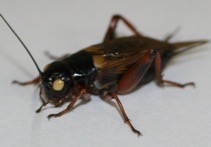Prof. Hitoshi Aonuma
Researches
Animals alter their behavior in order to respond to the demands of changing environments. Society and the crowd are also dynamic environments. We have investigated the design principle of neuronal mechanisms underlying adaptive behavior including social adaptability in animals. We then focus on how animals select and decide their behavior depending on previous experiences. Aggressive behavior in insects provides us with great model systems to investigate the neuronal mechanisms underlying emerging adaptive behaviors. We focus on insects and some other kinds of invertebrate animals to investigate neuronal mechanisms of adaptive behavior since they have rather simple and identical nervous systems.
We have focused on insect aggressive agonistic behavior. We perform neurophysiological, behavioral, neurochemical, genetical, and pharmacological approaches. Based on the results from biological experiments, we then build dynamic system models to bridge the gap between behavior and physiology to understand the physiology of aggressive behavior.
Recent Publications
• Aonuma, H. and Benelli, G. (2023). Aminergic control of aggressive behavior in social insects. Entomologia Generalis 43, 927-937.
• Wyszkowska, J., Kobak, J. and Aonuma, H. (2023). Electromagnetic field exposure affects the calling song, phonotaxis, and level of biogenic amines in crickets. Environ Sci Pollut Res Int.
• Aonuma, H., Naniwa, K., Sugimoto, Y., Ohkawara, K. and Kagaya, K. (2023). Embodied latch mechanism of the mandible to power at ultra-high speed in the trap-jaw ant Odontomachus kuroiwae. J Exp Biol 226.
• Niida, T., Terashima, Y., Aonuma, H. and Koshikawa, S. (2023). Photoreceptor genes in a trechine beetle, Trechiama kuznetsovi, living in the upper hypogean zone. Zoological Letters 9.
• Ludwig J.C., Aonuma H. and Trimmer B.A. (2022) The larval scaffold controls fascicle number but is not required for formation of the dorsolongitudinal flight muscles in Manduca sexta, Arthropod Structure and Development 68: 101170. doi: 10.1016/j.asd.2022.101170.
• Kudo T., Aonuma H. and Hasegawa E. (2021) A symbiotic aphid selfishly manipulates attending ants via dopamine in honeydew, Scientific Reports 11: 18569.
• Hayase Y., Aonuma H., Takahara S., Sakaue T., Kaneko S. and Nakanishi H. (2021) Fold analysis of crumpled sheet using micro computed tomography, Physical Review E 104: 025005.
• Scibelli A.E., Caron D.P, Aonuma H., Trimmer B.A. (2021) Proleg retractor muscles in Manduca sexta larvae are segmentally different suggesting anteroposterior specialization, Journal of Experimental Biology 224 (13), jeb242508.
• Shepherd S., Lima M.A.P., Oliveira E.E., Sharkh S.M., Aonuma H., Jackson C.W., and Newland P.L. (2021) Sublethal neonicotinoid exposure attenuates the effects of electromagnetic fields on honey bee flight and learning, Environmental Advances 4 (2021) 100051.
• Shepherd S., Jackson C.W., Sharkh S.M., Aonuma H., Oliveira E.E. and Newland P.L. (2021) Extremely low-frequency electromagnetic fields entrain locust wingbeats, Bioelectromagnetics 42: 296-308.
• Naniwa, K. and *Aonuma H. (2021) Descending and ascending signals that maintain rhythmic walking pattern in the cricket, Frontiers in Robotics and AI 8:625094.
• Owaki D., Aonuma H., Sugimoto Y. and Ishiguro A. (2021) Leg amputation modifies coordinated activation ofthe middle leg muscles in the cricket Gryllus bimaculatus, Scientific Reports 11: 1327.
